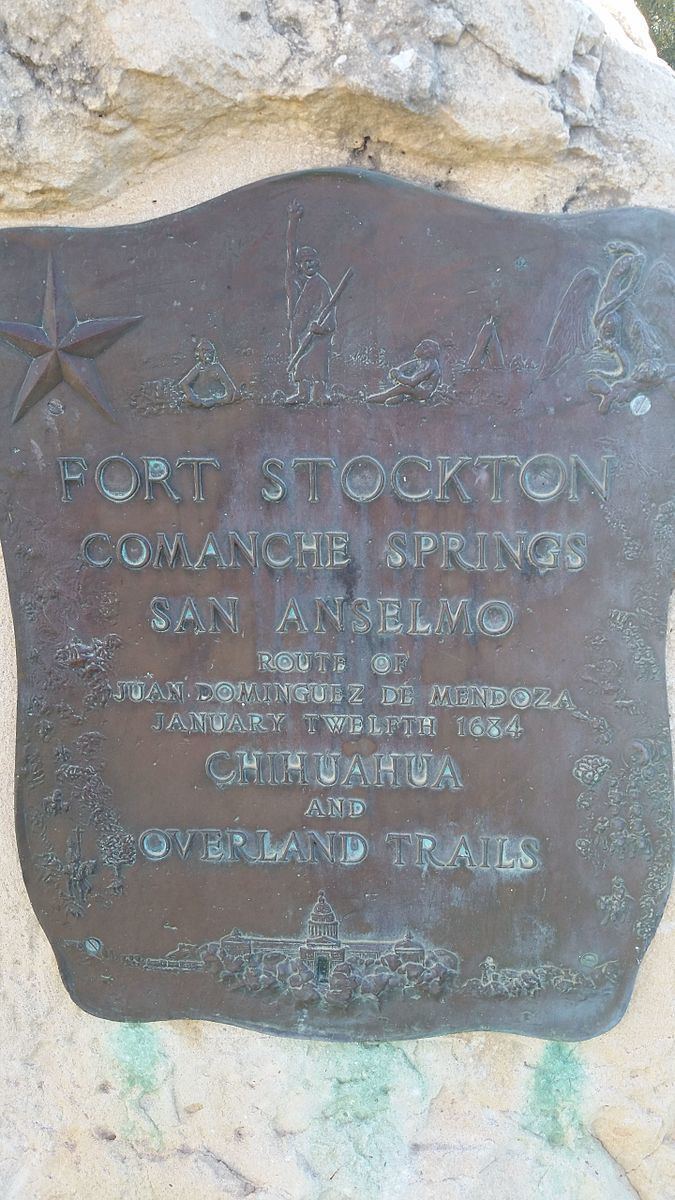Nationality Spanish Occupation Soldier | Name Juan de | |
 | ||
Juan Domínguez de Mendoza (born 1631) was a Spanish soldier who played an important role in suppressing the Pueblo Revolt of 1680 and who made two major expeditions from New Mexico into Texas.
Contents
Early career
Juan Domínguez de Mendoza was born in 1631. He was a member of the wealthiest family in New Mexico. He had, at least, two siblings (between them, the governor of New Mexico Tomé Dominguez de Mendoza). At the age of twelve he went to New Mexico, and he was to accompany several expeditions into what is now Texas.
He was a member of the Diego de Guadalajara expedition of 1654 from Santa Fe to what is now San Angelo, Texas, where the three main tributaries of the Concho River converge. Domínguez rose in rank to lieutenant general and was appointed Maestro de Campo in New Mexico - second in command to the Governor. He was an able administrator, and by the time of the Pueblo Revolt in 1680 was one of the most experienced and capable of the New Mexico militia leaders. When the Pueblo Revolt broke out, Domínguez advanced north from Isleta Pueblo to Cochiti, to the southwest of Santa Fe. However, he was then forced to retreat to El Paso del Norte (now Cuidad Juarez). Later he was criticized for not being sufficiently aggressive in his action against the Pueblos.
Second Texas expedition
In 1681 a group of Jumano Indians came to El Paso asking for the Spanish to establish missions in their country. The Jumano chief Juan Sabeata had been baptized and understood Spanish ways. He was seeking protection for his people against the Apaches, whom he hoped the Spanish would engage in war. To gain the attention of the Spanish he said that thirty-six nations of Indians needed missions and claimed that a multi-colored cross had appeared above La Junta de los Ríos, at the junction of the Rio Conchos and Rio Grande near modern-day Presidio, Texas. (See La Junta Indians) He also talked of wooden houses floating on the sea, which the Spanish took to refer to French ships. Three friars left at once for La Junta, where they started missionary work.
The Governor Domingo Jironza Petriz de Cruzate sent Domínguez de Mendoza and Fray Nicolás López to explore the Jumano country and establish missions. He was instructed to look into trade potential and to explore for pearls. The expedition, often called the Mendoza Expedition, set off from El Paso on 15 December 1683, going down the Rio Grande to La Junta. Fray Antonio de Acevedo was left there in charge of new missions. The rest of the expedition, joined by many Indians, followed Indian trails north to the Pecos River, then followed the Concho River downstream to its junction with the Colorado River. They spent six weeks on what Domínguez called the "glorious San Clemente" river, building a fort, probably near the location of present-day Ballinger, Texas as defense against Apaches and hunting buffalo for hides and food. They fed and baptized many of the friendly local people who visited their camp.
Dominguez de Mendoza and the Jumano leader, Juan Sabeata, clashed early in the expedition. Sabeata, Dominguez said, was untruthful and spread false rumors of hostile Apaches to bring the expedition to a halt. Sabeata apparently believed that the Spaniards were more interested in hunting buffalo than fighting Apache. Sabeata abandoned the expedition as did most of the Indians. A grand council of Indians envisioned by the Spanish never took place and the Spaniards returned to El Paso having collected 5,000 valuable buffalo hides.
Later career
On returning to La Junta de los Ríos, Domínguez took possession of the north bank of the Rio Grande in the name of Spain. Domínguez and López returned to El Paso, and then went on to Mexico City in 1685, where they made a strong case for sending soldiers and missionaries to the Jumano country. Domínguez and López were initially optimistic about the potential for setting up missions among the Jumanos. However, Governor Jironza was unable to help since his forces were tied up combating local insurrections by the Suma and the Manso Indians. The incursion into eastern Texas by Frenchman René-Robert Cavelier, Sieur de La Salle in 1685 caused another distraction, so there was no immediate follow-up to Dominguez de Mendoza's expedition.
